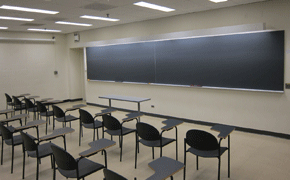Course Overview
This page focuses on the course 6.685 Electric Machines as it was taught by Prof. James L. Kirtley Jr. in Fall 2013.
This course is taught with a classical approach to electromechanics. The course is motivated by understanding phenomena and addressing design-oriented problems through a rigorous approach. Examples incorporate current research and emphasize applicability of concepts.
Course Outcomes
Course Goals for Students
- Understanding of principles and analysis of electromechanical systems
- Mastery of electromechanical design of the major classes of rotating and linear electric machines
- Ability to estimate the dynamic parameters of electric machines
Possibilities for Further Study/Careers
This course is pretty much a terminal subject, as there is no more advanced material in this area taught at MIT. Students might also take 6.641 Electromagnetic Fields, Forces, and Motion, or courses in heat transfer and structures. Many students who take this course do graduate work in machines, and some pursue PhD’s in the topic. There is a very strong demand for people with a background in this area, so industrial jobs are plentiful for students as well.
Curriculum Information
Prerequisites
6.061/6.690 Introduction to Electric Power Systems; or permission of the instructor.
Requirements Satisfied
H-Level Graduate Credit ![]()
Offered
Every other fall semester

Enrollment
Fewer than 10 students took this course in Fall 2013.
Breakdown by Year
The class for Fall 2013 was fairly small, and mainly comprised of Prof. Kirtley’s own graduate students. Prof. Kirtley shares some thoughts about the class composition: “This course has evolved into something of an apprenticeship for my own graduate students, and I would like to see more students enrolled in the subject. I would like it if MIT were to produce more graduates who know and understand electric machines and electromechanics.”
Breakdown by Major
Most of the students were PhD candidates in electrical engineering, and a small percentage were PhD candidates in mechanical engineering.
Typical Student Background
Typically, a student should have some background in electromechanics (6.061 Introduction to Electric Power Systems) and circuits (6.002 Circuits and Electronics and 6.003 Signals and Systems).
During an average week, students were expected to spend 12 hours on the course, roughly divided as follows:
Lecture
- Met 2 times per week for 1.5 hours per session; 26 sessions total
- 2 quizzes were administered during class sessions in lieu of lecture
- Prof. Kirtley shares some thoughts about the course format: “I teach the subject in a very classical (lecture/problem set/quiz) fashion, but with a lot of personal contact: I am available to talk with, and argue with, students in the class. I really enjoy, and I think the students do too, the give and take that comes from arguing about advanced ('hard') problems.”
Out of Class
- Readings from the course notes, which are recommended before attempting the assignments.
- 11 problem sets, which are essential to students for mastering the material. Some of the problem sets may also involve the use of a program such as MATLAB® to help with the calculations.
Semester Breakdown
| WEEK | M | T | W | Th | F |
|---|---|---|---|---|---|
| 1 |  |
 |
 |
 |
 |
| 2 |  |
 |
 |
 |
 |
| 3 |  |
 |
 |
 |
 |
| 4 |  |
 |
 |
 |
 |
| 5 |  |
 |
 |
 |
 |
| 6 |  |
 |
 |
 |
 |
| 7 |  |
 |
 |
 |
 |
| 8 |  |
 |
 |
 |
 |
| 9 |  |
 |
 |
 |
 |
| 10 |  |
 |
 |
 |
 |
| 11 |  |
 |
 |
 |
 |
| 12 |  |
 |
 |
 |
 |
| 13 |  |
 |
 |
 |
 |
| 14 |  |
 |
 |
 |
 |
| 15 |  |
 |
 |
 |
 |
| 16 |  |
 |
 |
 |
 |
 No classes throughout MIT
No classes throughout MIT Lecture session
Lecture session Quiz
Quiz No class session scheduled
No class session scheduled Assignment due date
Assignment due date Exam
Exam

 Room 1 of 1
Room 1 of 1 